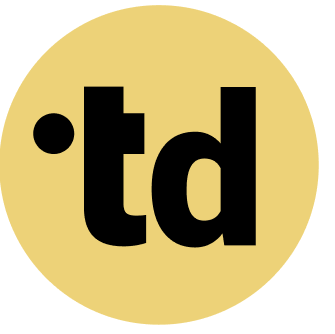Key Takeaways
Workload management software is a central platform for distributing, tracking, and balancing tasks to prevent team burnout and improve efficiency.
Key features include task management, resource allocation, real-time dashboards, and collaboration tools that provide clarity on roles and responsibilities.
Adopting this software can increase team performance by up to 25 percent by reducing ambiguity and improving job satisfaction.
In the grand saga of modern work, your team is the hero, ready to achieve incredible things. But even heroes face villains like chaotic workflows, murky responsibilities, and the ever-present dragon of burnout. With 46 percent of European workers feeling the strain of work overload, the need for a magic tool has Rarely been greater. Enter workload management software, the enchanted map that provides clarity, balances quests, and ensures every hero can use their powers effectively. It's time to turn down the noise, end the cycle of overload, and start building a legendary team that thrives on clarity and focus. This is how you orchestrate your masterpiece.
Practical Framework for Team Architects
As a Team Architect, you can apply these principles to your organization:
- Map Current State: Document existing roles and responsibilities using a tool like teamdecoder.
- Identify Gaps: Where are roles unclear? Where do humans and AI agents overlap?
- Define Clear Boundaries: Specify which tasks are handled by humans vs. AI agents.
- Create Accountability: Assign clear decision rights for each role.
- Iterate and Improve: Continuously refine based on team feedback.
Define Your Team's Rhythm with Workload Management
So, what is a workload management software, really? Think of it as the ultimate DJ for your team's projects, mixing tasks, deadlines, and resources to create a perfect workflow. It's a centralized platform designed to distribute and track work, ensuring no one is over- or under-utilized. With nearly 22 percent of European employees showing burnout symptoms, this is no small feat. This software helps you see everything in one place, turning chaos into a beautifully orchestrated symphony of productivity. It's less about cracking the whip and more about finding a sustainable pace where Many people can shine.
Here are some snack facts about the modern workplace challenge:
- In Europe, a significant number of workers feel the pressure of work overload or tight deadlines.
- Poorly defined roles are a major stressor, with research showing that employees with clear roles are a significant number of more efficient.
- Engaged teams, often a result of balanced workloads, see a a portion of jump in profitability.
- In Germany, 14 percent of employees report that time pressure and overload are the biggest drags on their well-being.
This isn't just about managing tasks; it's about a fundamental shift in organizational development that puts team well-being at the center. By getting a clear, real-time view of your team's capacity, you can finally stop guessing and start guiding with precision.
Sweet Teams Are Made of This: Core Software Features
The right workload management software acts as a central hub, giving Team Architects the visibility they need to build resilient, high-performing teams. It's about having the right tools to manage today's dynamic work environments, including the integration of AI agents. A 2024 PwC survey found that nearly 50 percent of employees saw their workload increase in the last year alone. Effective software provides the structure needed to handle that increase without overwhelming your people. It transforms abstract goals into actionable tasks assigned to the right person, with the right capacity.
Our Playful Tip: Look for features that make collaboration feel effortless, not forced. The goal is to find a tool that your team actually wants to use.
Deep Dive: A key function is capacity planning, which allows you to forecast future resource needs. This is essential for any leader involved in strategic workload planning. Key features typically include:
- Task Management and Prioritization: Visually organize tasks, set priorities, and assign deadlines to keep Many people aligned.
- Resource Allocation: Get a clear view of each team member's availability and current workload to distribute tasks fairly.
- Real-Time Dashboards: Monitor progress with visual reports and heatmaps that show who is at capacity and who can take on more.
- Collaboration Tools: Centralize communication with features like comments, file sharing, and notifications to keep Many people in the loop.
- Time Tracking: Understand how long tasks actually take, which helps improve future planning and estimates.
- AI-Powered Suggestions: Modern tools can suggest how to balance workloads or identify potential bottlenecks before they happen.
These features are the building blocks for a more transparent and efficient system of managing your team's most valuable resource: their time and energy.
Transform Overload into Opportunity and Clarity
Adopting a workload management software is a core part of modern change management, turning constant pressure into sustainable performance. When teams have clarity on their roles and responsibilities, their overall performance can increase by as much as a significant portion. This clarity eliminates the confusion that leads to duplicated work and missed deadlines. Instead of guessing who is responsible for what, Many people knows their part, which fosters a powerful sense of ownership and accountability. You can try teamdecoder for free to see this transformation firsthand.
This isn't just about efficiency; it's about building a healthier work culture. With a clear system, you can reduce the ambiguity that causes stress and disengagement. This directly impacts retention, as employees with clear roles report higher job satisfaction. By providing a transparent view of workloads, you empower your team to have honest conversations about capacity and priorities. This shift builds trust and makes it easier to adapt to new challenges, a key aspect of successful workload analysis. The result is a more resilient team that can handle challenges without burning out.
Architect Insight: Choosing Your Team's Perfect Tool
For Team Architects, selecting the right software is a strategic decision that shapes how your team collaborates and grows. It's not just about features; it's about finding a tool that fits your team's unique workflow and culture. With so many options available, it's easy to get lost. The key is to focus on tools that prioritize clarity and ease of use, ensuring it gets adopted across the team. A system that is too complex will only add to the cognitive load you're trying to reduce.
Our Playful Tip: Involve your team in the selection process. A tool that is chosen by the people who will use it every day has a the vast majority of higher chance of success (an unverified but highly plausible statistic).
Deep Dive: When evaluating options, consider these critical factors for scaling your operations:
- Scalability: Will the tool grow with your team? Look for solutions that can handle increasing complexity as you scale.
- Integration Capabilities: Does it connect with the other tools your team already uses, like Slack or Google Drive? Seamless integration prevents fractured workflows.
- User Experience (UX): Is the interface intuitive and easy to navigate? A clean design reduces the learning curve and encourages adoption.
- Reporting and Analytics: Does the tool provide insightful data on team performance and workload distribution? This is crucial for measuring workload management effectively.
- Support for Hybrid Teams: Does it cater to the needs of a modern hybrid team, where humans and AI agents collaborate on projects?
Choosing the right tool is the first step in building a more intentional and sustainable way of working.
Make Bots and Humans Click: The Future is Hybrid
The conversation around workload management is evolving to include a new type of team member: the AI agent. As automation handles more routine tasks, the challenge for modern leaders is to structure a hybrid team where humans and AI work together seamlessly. This requires a new level of clarity around roles and responsibilities. A robust workload management software provides the framework for this collaboration, defining what tasks are for humans and what are for bots. This ensures that AI integration doesn't create new confusion but instead frees up your team for more strategic, creative work.
The goal is to use technology to augment human capability, not just replace it. By clearly defining the roles of AI agents within your team structure, you can ensure a smooth operational flow. This approach is at the heart of future-focused organizational development. It allows you to leverage the efficiency of AI without losing the critical thinking and emotional intelligence of your human team members. The right platform makes this hybrid collaboration visible and manageable, setting your team up for success in a changing world. See our pricing to learn how our plans support this new reality.
Ready to Reshape Your Team's World?
Leaving behind the chaos of undefined roles and overwhelming workloads is a journey, but it starts with a single step. By embracing workload management software, Team Architects can guide their heroes out of the fog of ambiguity and into the clarity of focused, meaningful work. It's about creating an environment where *Teams Just Wanna Have Fun* (and be incredibly productive). This is more than just a software solution; it's a commitment to building stronger, more resilient, and more engaged teams. It's about making change feel like play.
Try teamdecoder for free - shape your team and make change feel like play!
#Team Architecture #HybridTeam #WorkloadManagement #ChangeManagement
More Links
Wikipedia offers an overview of Intelligent Workload Management.
German Federal Institute for Occupational Safety and Health (BAuA) provides figures, data, and facts related to the monitoring and evaluation of mental health in the workplace (S-MGA).
German Federal Institute for Occupational Safety and Health (BAuA) features a practical publication (A45) on occupational safety and health.
German Federal Institute for Vocational Education and Training (BIBB) discusses a specific topic related to vocational education and training.
University of Muenster presents a news article from the university.
BioMed Central features an article published in the 'Occupational Medicine' journal.
PubMed (National Library of Medicine) provides an entry for a research article in the PubMed database.
German Bundestag contains a PDF document with a statement from the German Federal Institute for Occupational Safety and Health (BAuA).
FAQ
What is the primary goal of a workload management tool?
The primary goal is to ensure the efficient and equitable distribution of work across a team. It aims to maximize productivity and meet project deadlines while preventing employee burnout and promoting a healthy work-life balance.
How do I know if my team needs workload management software?
Signs that your team needs this software include frequently missed deadlines, confusion over task ownership, visible signs of employee stress or burnout, and a general lack of visibility into project progress and team capacity.
What's the difference between workload management and project management?
Project management focuses on the lifecycle of a specific project (planning, executing, closing). Workload management is a broader, continuous process focused on the people, ensuring that the entire team's capacity is managed effectively across all projects and tasks.
How does teamdecoder help with workload management?
teamdecoder is designed for Team Architects to visually map out roles, responsibilities, and workflows. It provides the clarity needed to balance workloads effectively, manage hybrid teams, and drive organizational development from the ground up.





